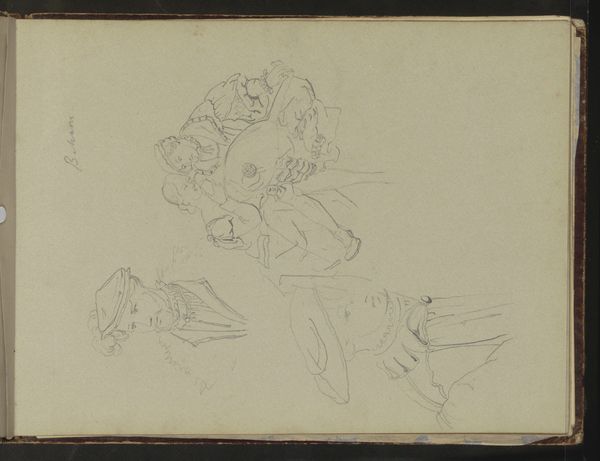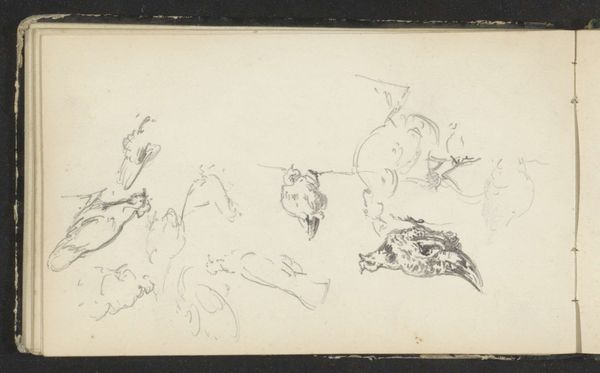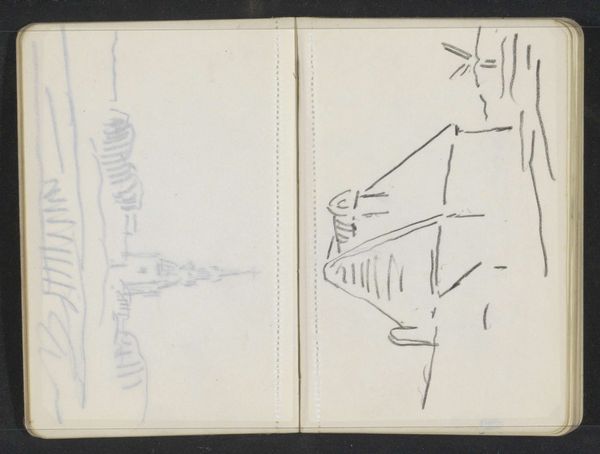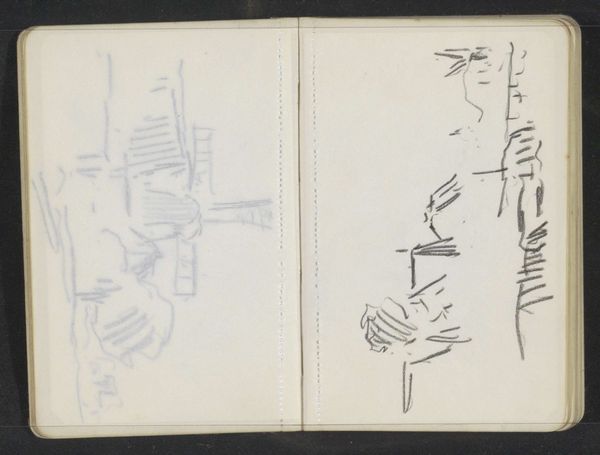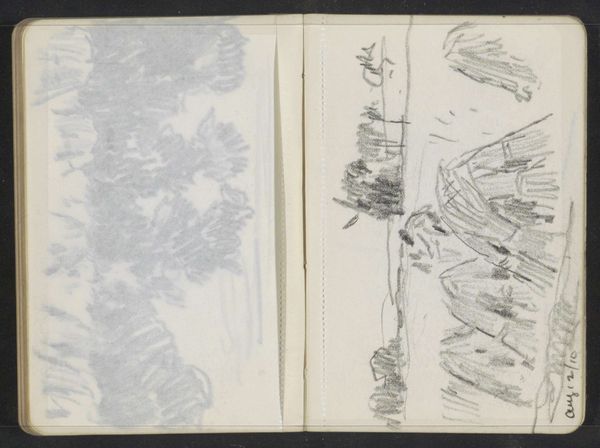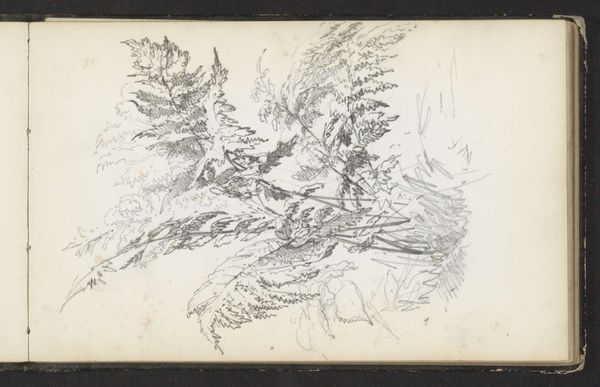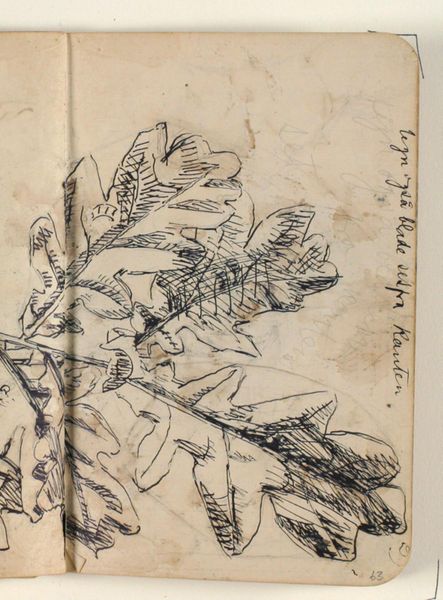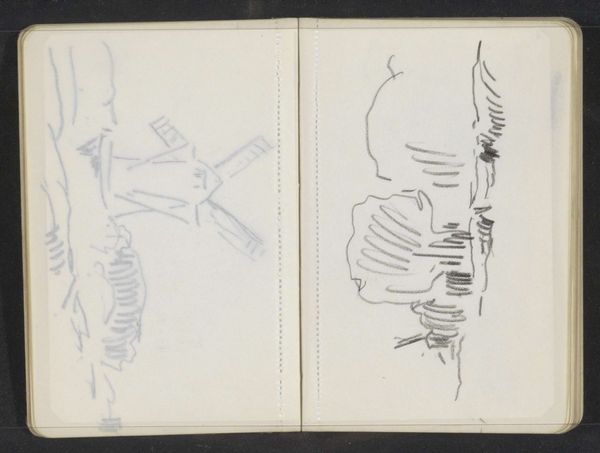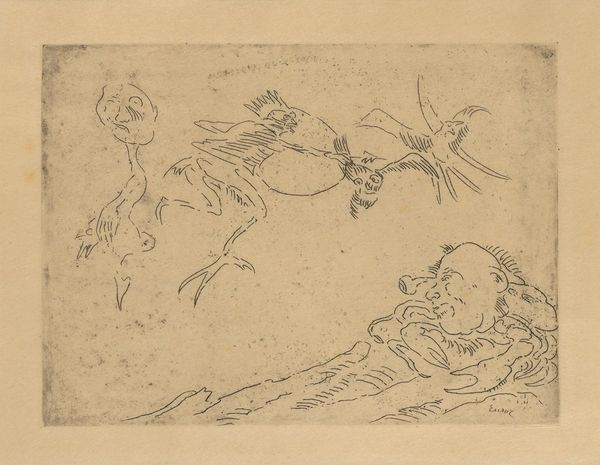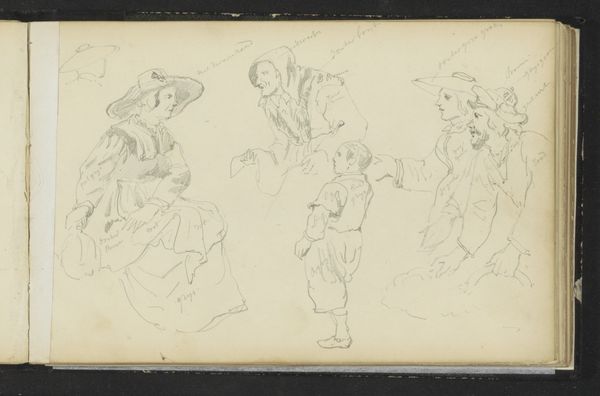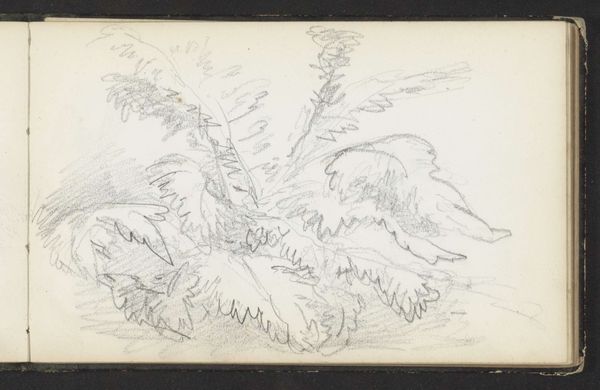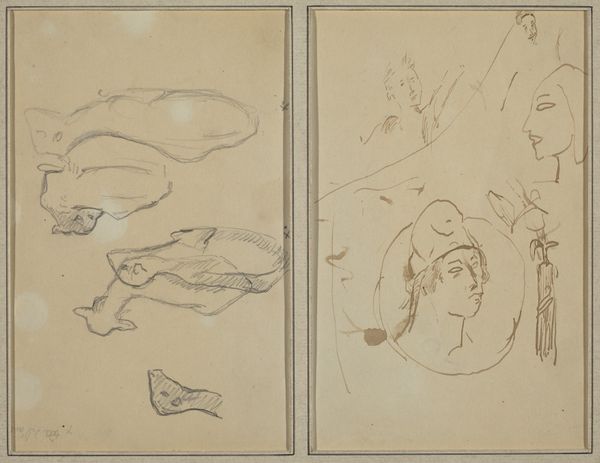
Japanse motieven, onder andere stengels bamboe, een kers en een Japanse spaniël c. 1890 - 1922
0:00
0:00
drawing, paper, ink
#
drawing
#
figuration
#
paper
#
ink
#
line
#
japonisme
Copyright: Rijks Museum: Open Domain
Curator: This drawing, entitled "Japanse motieven, onder andere stengels bamboe, een kers en een Japanse spaniël," which translates to "Japanese motifs, including bamboo stalks, a cherry and a Japanese spaniel" comes to us from Johanna van de Kamer, and dates from around 1890 to 1922. The media used are ink on paper. Editor: It's quite striking how she captures the essence of each form with such simple, decisive lines. The negative space almost feels as important as the drawn elements. Curator: The style indicates the influence of Japonisme, a late 19th-century French art movement. European artists, impressed by Japanese art and design, started incorporating elements such as flat perspectives, bold outlines, and asymmetrical compositions into their work. Editor: Precisely! Notice how the bamboo stalks aren't realistically rendered. There’s no attempt at photographic accuracy, just a beautiful simplification of the form itself. The starkness emphasizes their elegance. Curator: This fascination coincided with increased global trade and colonialism, affecting Western perceptions of Asian cultures, but how much did artists such as Johanna integrate and delve into the Japanese culture? Was it superficial? This becomes crucial. We need to know if these are interpretations from an outside perspective influenced by the cultural gaze of the time. Editor: That tension you’ve mentioned truly enriches our understanding. Consider also how her choice to render these motifs in ink mirrors the traditional techniques used in Japanese calligraphy and painting, underscoring the artwork's stylistic foundations. The flow of ink adds a sense of dynamism. Curator: Looking at how these "Japanese motifs" were used in her overall body of work helps illuminate how artistic exchanges happen, and raises questions of cultural appropriation versus authentic appreciation, an area where historical perspectives matter. Editor: Yes, it's more than surface-level mimicry. Through an economy of lines, Van de Kamer managed to encapsulate a cultural vision using Western pictorial traditions in black and white contrasts, which creates an unexpected kind of depth. Curator: By understanding Japonisme and Van de Kamer’s position within this movement, we can appreciate it as part of the story of international art and cultural encounters. Editor: Indeed. What begins as seemingly simple brushstrokes becomes a complex dance of cross-cultural exchange, realized through the language of lines, isn’t it?
Comments
No comments
Be the first to comment and join the conversation on the ultimate creative platform.
